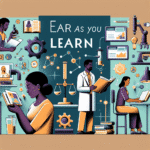Choosing a profession can feel overwhelming, especially when you want to make a decision that balances personal interests, market demand, and long-term growth. The good news is that there are many high-quality, free resources and straightforward strategies you can use to narrow your options, test assumptions, and choose a direction with confidence. This article collects practical tools, clear steps, and research tips to help you move from curiosity to a realistic plan without spending money on paid services.
Start with a simple framework
Before diving into tools and listings, give yourself a simple decision framework. Ask three questions: What do I enjoy doing? What am I reasonably good at or can learn to do well? What kind of lifestyle do I want and can a given profession support it? Write short answers for each to create guardrails. That reduces the endless possibilities into a manageable shortlist.
Quick exercise
- List five tasks you enjoy doing in a typical week, paid or unpaid.
- List five skills others compliment you on or you’ve been trained in.
- Rank lifestyle priorities (salary, flexibility, location, mission).
Free assessments and where to find them
Assessments help translate interests and skills into career categories. Look for free personality, interest, and skills inventories from reputable sources. Start with publicly available tools from universities, nonprofit career centers, and government job services rather than commercial quizzes that push paid upgrades. These free assessments can offer immediate clarity and suggest occupations you might not have considered.
- Interest inventories: Search for “Holland Code” or RIASEC-based tests offered by university career centers.
- Skills checklists: Look for downloadable worksheets that let you score experience across technical and transferable skills.
- Personality profiles: Free short versions of frameworks (like Big Five or Myers-Briggs–style inventories) can highlight working environments you prefer.
For an easy next step, try one of the free online assessments on this site to map your interests to career clusters: Career assessments and guides. Use the results as hypotheses to test, not as prescriptions to follow blindly.
Research tools and how to use them
Once you have a shortlist, use trustworthy occupational data to compare roles on pay, job outlook, typical duties, and qualification requirements. Government and academic sites are best because their data tend to be comprehensive and regularly updated. For example, consult the Occupational Outlook Handbook at the U.S. Bureau of Labor Statistics for clear, occupation-by-occupation profiles including median pay, work settings, and projected growth. Use this information to rule out options that don’t align with your financial or geographic needs.
How to read job profiles effectively
- Focus on median wages, not just entry-level or top salaries.
- Look at projected growth to understand long-term demand and resilience.
- Read the “What They Do” sections to ensure the day-to-day tasks match your interests.
- Check education and certification requirements and map out the time and cost to qualify.
Practical steps to test a career before committing
Testing a profession reduces risk and builds confidence. You don’t need to enroll in a degree program to get a meaningful sense of a job. Use short, low-cost experiments to learn quickly.
- Informational interviews: Reach out to people in roles you’re curious about. Ask for 20–30 minutes to discuss typical days, challenges, and how they entered the field.
- Job shadowing and volunteering: Spend a day or a few hours observing or assisting in the role to see whether you enjoy the environment and tasks.
- Microprojects and freelancing: Try a small paid or unpaid project related to the job—building a simple website, writing a report, or doing basic data cleanup—to test fit and skill gaps.
- Online short courses: Free or low-cost courses can teach core skills and let you decide whether a subject holds your interest before investing heavily.
Making decisions and planning next steps
After testing, consolidate what you learned. Create a simple timeline and checklist: required training or certifications, networking goals, portfolio or experience milestones, and financial planning for any transition period. Keep at least two options in play so you can pivot if circumstances change. Use measurable short-term goals—complete an online course, conduct five informational interviews, or finish a volunteer stint—to maintain momentum.
Final tip
Treat career choice as an iterative process, not a one-time verdict. People change professions multiple times in their lives; the best approach is to build transferable skills and a network that support several pathways. With free assessments, good public research sources, and small practical tests, you can choose a profession more thoughtfully and with less risk.



